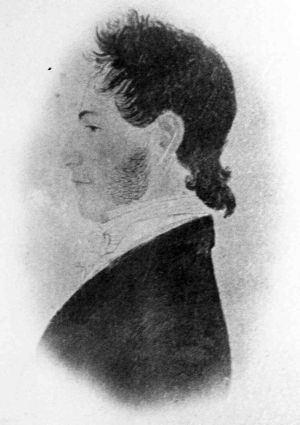James Weir
James Weir (1793–1869) - Twenty-First Master of Corinthian Lodge[edit]
Early Life and Profession[edit]
James Weir was born on March 13, 1793, in Leicester Square, London. He worked as a tailor with his father by day while attending school in the evenings. Inspired by stories of maritime adventures, he left his family in 1806 to pursue a life at sea. Through a patron’s influence, he secured a role as a Midshipman in the British Navy, joining the North Sea fleet stationed in Grimsby Roads on the River Humber. His naval career would prove both perilous and defining, placing him in significant historical battles and voyages.
[edit]
In the British Navy, Weir first sailed in the North and Baltic Seas. However, seeking a new experience, he departed the Navy without formal leave, transitioning into the merchant service. His adventures continued as he embarked on a voyage to the East Indies, with stops at Madras and Ceylon. Here, fate took another turn when he was "pressed"—forcibly recruited—back into the British Navy. This time, he served on the *San Fiorenzo*, an 18-pounder, 36-gun frigate under Captain Nicholas Hardinge.
While aboard the *San Fiorenzo*, Weir witnessed intense combat during a pursuit and engagement with the French 40-gun frigate *Piedmontaise* near Cape Comorin. The action began on March 6, 1808, when the British ship spotted the *Piedmontaise* chasing East India Company ships. Over eight hours, the *San Fiorenzo* pursued the French frigate, resulting in an initial ten-minute exchange of fire. By dawn, the British ship renewed the chase, eventually forcing the *Piedmontaise* to engage in a fierce battle. Captain Hardinge was tragically killed in the encounter, leaving command to Lieutenant William Dawson. After several hours of combat, during which both ships suffered heavy damage, the *Piedmontaise* surrendered.
The battle was notable for the valor displayed and the high casualties. The *San Fiorenzo* sustained losses of thirteen killed and twenty-five wounded, while the *Piedmontaise* recorded forty-eight killed and one hundred and twelve wounded. Notably, the infamous French captain, Charles Moreau, who had previously gained notoriety by capturing the East India Company’s *Warren Hastings*, drowned himself rather than face capture by the British.
Brother Weir's naval history continued with the capture of the Isle of Bourbon on July 8, 1810, and the capitulation of Isle of France on December 3, 1810, under the command of Vice-Admiral Bertie. In both cases, Weir witnessed significant British victories over French colonial forces, contributing to the consolidation of British influence in the Indian Ocean.
In 1812, Weir transitioned to the merchant navy as the third mate of a South Sea trader, journeying to the Pacific Ocean and South America. While at Rio de Janeiro, he was once again pressed into the British Navy, this time serving on the *Amelia*, a 38-gun frigate. His service took him to Gibraltar, Naples, and Malta, witnessing significant military events, including the return of Napoleon from Elba.
Return to Civilian Life and Move to America[edit]
After ten years of sea-faring, Weir returned to London, where he rejoined his father’s tailoring trade. In 1817, he emigrated to the United States, settling in Concord, Massachusetts, where he established himself as a master tailor. He became the fourth tailor in Concord since the American Revolution and is credited with introducing the square rule of garment cutting by inch measure in Massachusetts.
Masonic Journey[edit]
Brother James Weir was initiated into Corinthian Lodge on September 10, 1821, and admitted to membership on December 3, 1821. He held numerous roles within the Lodge, including Steward, Junior Deacon, Senior Deacon, and Senior Warden. In 1851, he was elected Master of the Lodge, serving until 1852. He also was a member of the Concord Royal Arch Chapter, furthering his Masonic commitment.
Personal Life and Legacy[edit]
James Weir passed away on March 25, 1869, after a life marked by adventure, service, and dedication. His legacy within the Lodge and his contributions to the town of Concord as a tailor and Mason are well remembered.
